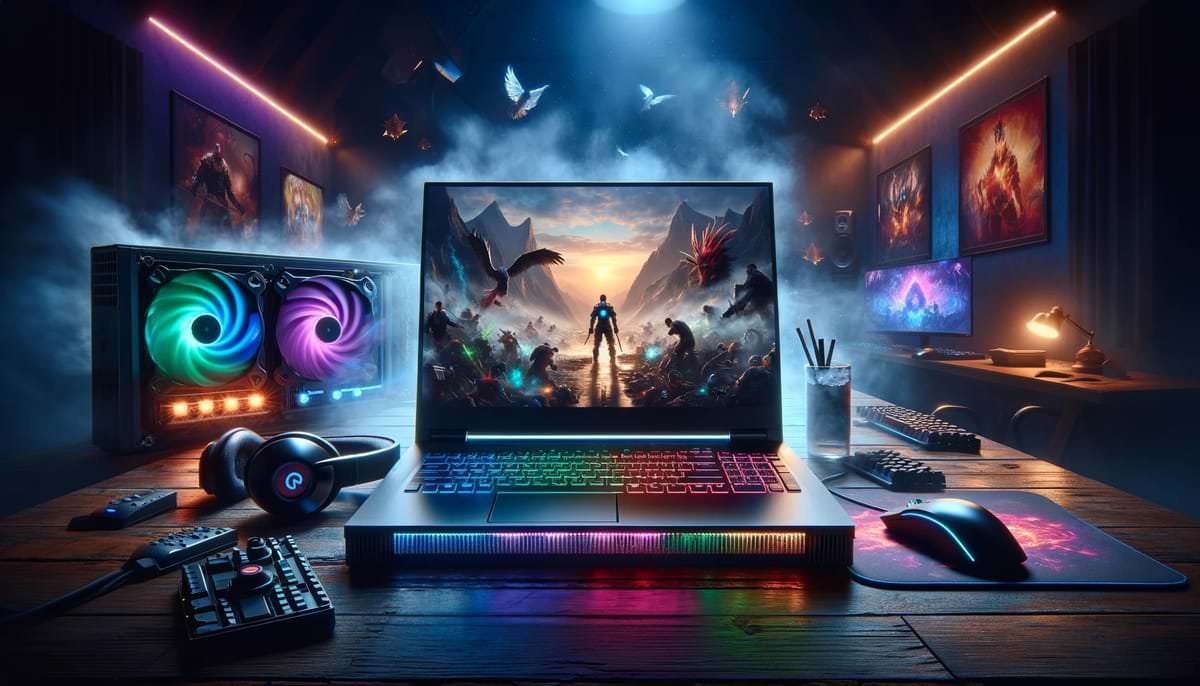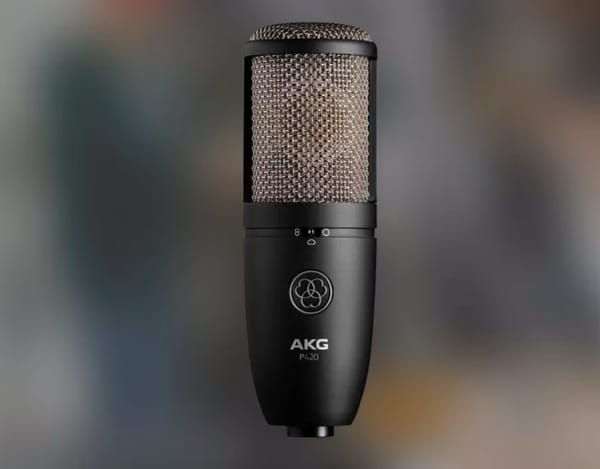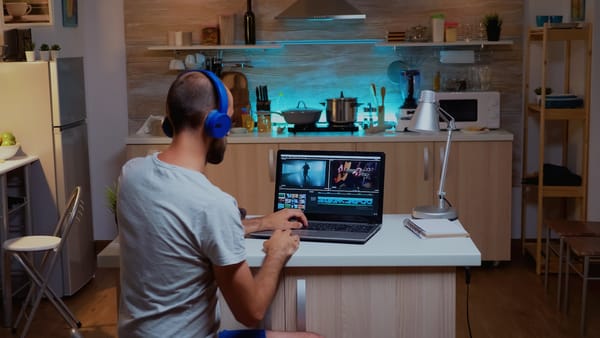How to Cool Gaming Laptop: Effective Heat Management Tips

Maintaining an optimal temperature for your gaming laptop is crucial to ensure peak performance and longevity.
Overheating can lead to reduced efficiency, potential hardware damage, or even system failure. To keep your gaming laptop cool, understanding the basics of thermal management is key.
Gaming laptops, with their high-performance components, are particularly susceptible to heat build-up, which is exacerbated during intense gaming sessions or heavy computational tasks.
There are several methods to prevent your gaming laptop from overheating. Improving the airflow can greatly enhance your laptop's ability to remain cool. This could include making sure the air vents are not obstructed and using a cooling pad for an additional boost.
Maintenance is also crucial; dirty fans or vents can impede air circulation, so regular cleaning is a must. Moreover, tweaking your laptop's settings to optimize for temperature can make a significant difference, including adjusting power settings and minimizing unnecessary background applications.
Key Takeaways
- Understanding thermal management is essential for maintaining gaming laptop performance.
- Enhancing airflow and regular maintenance are key to preventing overheating.
- Optimizing laptop settings can significantly improve cooling efficiency.
Understanding Laptop Cooling Fundamentals
When you immerse yourself in gaming on your laptop, cooling is paramount to maintaining performance. Every component inside your laptop plays a part in heat generation, and understanding cooling fundamentals ensures your gaming sessions are smooth, and the hardware is protected.
Importance of Cooling for Gaming Laptops
Your gaming laptop relies on efficient cooling to prevent overheating. Overheating can lead to throttled performance and even damage hardware over time. Efficient cooling ensures the heat generated by your laptop's high-performance parts is managed effectively, keeping your system running at optimal speeds.
How Laptops Generate Heat

Heat is a natural byproduct of electrical energy conversion within your laptop. The processor, commonly known to be the heart of your system, generates significant heat, especially when running demanding games. Other components like the graphics card contribute to the total heat output inside a compact laptop chassis.
The Impact of Heat on Gaming Performance
Excess heat can cause your laptop to overheat, leading to a decrease in gaming performance as your system attempts to cool down by reducing power consumption—known as thermal throttling. Sustained overheating can also shorten the lifespan of your laptop's critical components, making it crucial to manage and mitigate heat effectively for long-term gaming enjoyment.
Enhancing Airflow for Optimal Cooling
Maintaining your gaming laptop's performance involves ensuring it stays cool, which is crucial for both efficiency and longevity. Proper airflow is key, and the vents, fans, and surface placement all play pivotal roles.
The Role of Vents and Air Circulation
The vents on your gaming laptop are designed to allow cool air in and hot air out. Ensure these vents are clear of obstructions such as papers or fabrics that can impede airflow. Your laptop's internal fans work tirelessly to pull in cool air and push out hot air, maintaining an optimal operating temperature.
Positioning Your Laptop to Maximize Airflow
Position your laptop on a hard, flat surface to maximize airflow. This allows the gaming laptop’s fans to effectively draw in more air. If the fans underneath are blocked, your system's temperature can rise quickly. Avoid placing your gaming laptop on soft surfaces like beds or lap cushions, which can obstruct vents and insulation, causing overheating.
Using Cooling Pads and External Fans
Invest in a cooling pad, which provides additional fans that help keep your gaming laptop cool. These external devices often have their own fans, which push a steady stream of air to the laptop's base, crucial for when the in-built cooling system isn't enough. When looking for a cooling pad, select one that aligns well with your laptop's vents to optimize airflow.

Maintaining Your Laptop's Cooling System
Adequate cooling is vital for your gaming laptop's performance and longevity. This section covers key maintenance strategies to ensure your laptop's cooling system remains effective.
Regular Cleaning to Prevent Dust Buildup
You should clean your laptop approximately every six months to prevent dust and debris accumulation. A build-up can block air vents and reduce cooling efficiency. Use compressed air to blow out dust from cooling fans and internal components. This ensures that air can flow freely, keeping the cooling performance at its peak.
- Turn off your laptop and unplug it from any power source.
- Hold the can of compressed air vertically to avoid moisture entering the laptop.
- Use short bursts of air to remove the dust from vents, fans, and other openings.
When to Consider Replacing Thermal Paste
If your laptop is overheating and regular cleaning hasn't helped, you may need to reapply your thermal paste—a substance that aids heat transfer between the CPU or GPU and the heat sink. This isn't needed often, but if your laptop is over a few years old or cooling performance has degraded, it's wise to consider replacing the thermal paste.
- Seek professional assistance if you're not confident in doing this yourself.
- The right time to replace thermal paste is typically after 2–3 years of regular laptop use.
Ensuring Cooling System is Functioning Properly
Lastly, ensure your laptop’s cooling system is functioning properly. Listen for irregular cooling fan noises, which might indicate a fault or obstruction in your system. Monitor your laptop’s temperature during use; if it's consistently high, it's time for a maintenance check.
- Check for software updates or BIOS updates that might improve cooling management.
- If you notice significant performance issues, consult a professional to inspect the internal cooling system.
These measures, carried out regularly, will maintain the effectiveness of your laptop's cooling system and extend its operational life.
Optimizing Laptop Settings for Better Temperature Control
Managing your laptop's temperature effectively is vital for maintaining optimal gaming performance and prolonging the life of your system. With the right adjustments to your laptop settings, you can achieve better thermal efficiency.
Adjusting Power Settings for Efficiency
To manage your laptop's heat, navigate to your power settings and select a balanced or power-saving mode. These modes decrease the CPU and GPU usage when not all the computing power is necessary, leading to lower temperatures. Adjusting the power plan to turn off the display and enter sleep mode after shorter periods of inactivity can also save energy and reduce heat.
Graphical Settings and Their Effects on Temperature
High graphical settings can push your GPU to its limits, generating more heat. Lowering the resolution or scaling back on special effects such as shadow detail or antialiasing can mitigate this. Games often have an option to cap the frame rate, which is an effective way to lessen the stress on both the CPU and GPU, keeping your system cool while gaming.
Software Solutions to Monitor and Control Heat
Monitoring software is a crucial tool in understanding how the temperature changes during gaming sessions. Applications like HWMonitor or SpeedFan can help you keep an eye on your hardware's temperature. To directly influence temperature, consider using software solutions that allow you to control the laptop's fan speeds. These customizable settings can be a proactive way to keep your laptop cool during intense gaming periods.

Physical Modifications and Upgrades
To optimize your gaming laptop’s performance and longevity, implementing physical modifications and upgrades is essential. With the right adjustments, you can significantly enhance cooling efficiency.
Installation of After-Market Cooling Accessories
You can take control of your device's temperature by installing after-market cooling accessories. A high-quality laptop cooler is an effective way to manage heat. These units often come with multiple fans that provide direct additional airflow to your laptop's chassis, crucial for maintaining optimal operating temperatures. Some models even feature adjustable fan speeds, allowing you to find the perfect balance between cooling power and noise.
When selecting a cooling pad, consider the size of your laptop and the positioning of its vents to ensure compatibility and effectiveness. Additionally, cooling pads that also act as laptop stands can provide a slight incline, which naturally improves airflow and cooling.
The Benefits of Laptop Stands and Cool Surfaces
Using a laptop stand serves a dual purpose: it tilts your laptop for an ergonomic typing angle and allows for better air circulation beneath the device. A stand with an incorporated cooling system, or pairing a stand with a separate cooling pad, can make even more of a difference.
Choose a stand that has a sturdy build and can accommodate the size and weight of your gaming laptop. In addition, always place your laptop on a hard surface rather than a soft one to prevent obstructing air vents.
A soft surface, like a bed or a couch, can hinder ventilation and trap heat, which is detrimental for modern gaming systems. Conversely, a hard surface promotes good airflow and helps to keep the laptop cooler.
By investing in a solid laptop stand and using a cooling pad when necessary, you'll be able to improve your gaming performance while also extending the lifespan of your laptop through better heat management.
Frequently Asked Questions
In this section, you'll find targeted answers about enhancing your gaming laptop's cooling, with a focus on established methods and the pros and cons of various cooling systems.
What are the most effective laptop cooling pads on the market?
Your gaming laptop's performance and longevity can benefit from the use of cooling pads. Pads such as the Cooler Master NotePal X3 and the Thermaltake Massive have been cited for their effectiveness in managing heat.
Can I use ice to safely lower my gaming laptop's temperature?
Using ice is not safe for lowering your laptop's temperature due to condensation risks, which can cause water damage to the electronics. Always look for safer alternatives that do not involve any liquid.
What methods can quickly cool down an overheating gaming laptop?
To rapidly cool down an overheating laptop, shut down high-performance applications, place the laptop on a suitable surface for better ventilation, and consider using a cooling pad to increase airflow.
Are external laptop chill mats beneficial in reducing heat?
External chill mats can be beneficial, as they provide additional cooling through fans or heat-dissipating materials. They also raise the laptop for improved airflow under and around the device.
How does one improve air circulation for a laptop during intense gaming sessions?
Improving air circulation can be achieved by using stands or coolers that elevate the laptop, ensuring the air vents are not obstructed, and regularly cleaning the vents and fans to prevent dust build-up.
What are the pros and cons of using water cooling systems for laptops?
Water cooling systems offer efficient cooling and can be quieter than fan-based systems. However, they are typically bulkier, more expensive, and carry the inherent risk of leaks, which could be detrimental to your gaming laptop.



